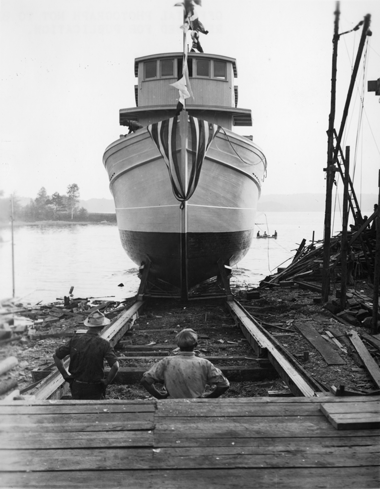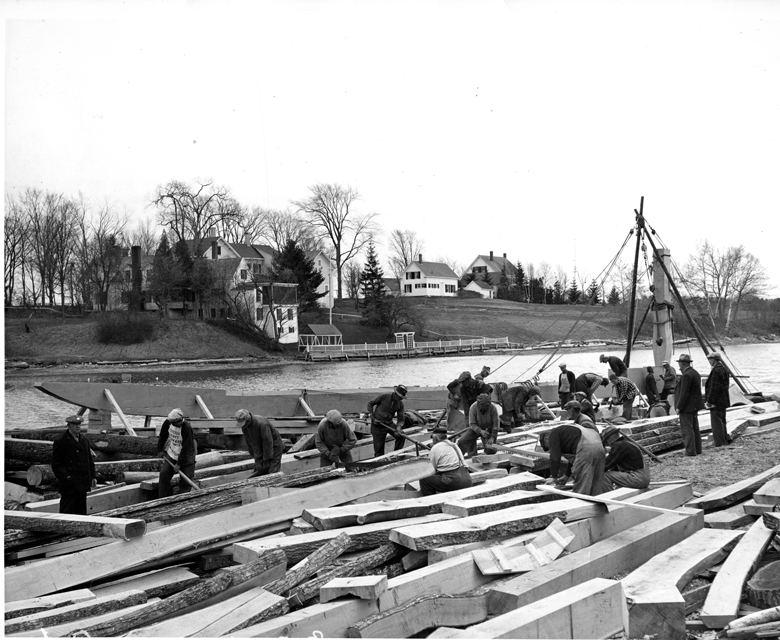Maine’s role in the nation’s effort during the World War II is most frequently discussed in terms of destroyers and Liberty ships built, military fortifications sprinkled throughout Casco Bay, and the influx of naval personnel swarming the city of Portland on shore leave from warships patrolling the Atlantic.
However, there is another facet to maritime war production that is often overlooked. Beyond the yards building steel vessels for the government—Portsmouth Naval Shipyard, South Portland under several names, and Bath Iron Works—at least 20 small shipyards and boatyards built over 1,100 wooden craft for the government.
Prior to the war, these yards mainly produced fishing vessels and pleasure boats while others were established to take advantage of opportunities provided by contracts with the Navy, Maritime Commission, and Army. From Freeport to Southwest Harbor, these yards produced everything from skiffs to transport ships, totaling nearly 30 different boat types serving almost as many functions.
Many of the smaller yards were able to go back to building fishing vessels and yachts, but not all.
The Harry G. Marr yard in Damariscotta, pictured here, was certainly not one of the more productive wooden yards working under government contracts, completing five coastal transports and two coastal minesweepers throughout the war years (the most prolific was Southwest Harbor’s Henry R. Hinckley yard with 465 boats built for the Army).
Because the Navy employed local professional photographers to record progress at certain intervals and milestones of construction, there are scores of images like these in Maine Maritime Museum’s collection, documenting all stages of construction at the Marr yard and many others. In some cases, this photographic documentation continued through sea-trials.

The images included here show the minesweeper USS Security (AMc-103), one with its newly laid keel and the other taken five months later at its launch on Sept. 27, 1941.
Men can be seen hunching over timbers, using only hand tools to shape the pieces that would eventually form the frames of the vessel—no power tools around—a rare sight in 1941. While vessels are seldom complete at the time of their launch, Security would not be finished in Damariscotta. Marr did not have the equipment to install machinery and so this work was completed in Rockland.
After the war, many shipyards reduced operations or just went out of business altogether. This was especially true of those created to obtain wartime contracts. Government work for smaller yards disappeared, while steel yards were able to capitalize on Cold War Naval contracts.
Many of the smaller yards were able to go back to building fishing vessels and yachts, but not all. Operations at the Marr yard seem to have ceased in 1946 with just one fishing vessel built after completion of wartime work.
Today, the site of the Henry G. Marr yard is home to downtown Damariscotta’s municipal parking lot and boat launch.
Every October, there continue to be launchings here, but of the gourd variety. Spectators gather here to witness the annual Pumpkinfest Regatta, where giant pumpkins are used as boats and race in various themed heats.
Kelly Page is curator of collections at Maine Maritime Museum in Bath. Explore resources and plan your visit at www.MaineMaritimeMuseum.org.





